Recognizing ADHD in Children: Signs, Early Interventions, & the Role of Medication
Attention-Deficit/Hyperactivity Disorder (ADHD) is a neurodevelopmental disorder that manifests through patterns of inattention, hyperactivity, and impulsivity. These behaviors, when more frequent and severe than typical childhood behaviors, can significantly impair a child's daily functioning. Early detection and intervention, including parent coaching, behavioral strategies, environmental adjustments, executive functioning coaching and when appropriate, medication, can lead to improved outcomes for children with ADHD. Below we discuss the signs of ADHD in children, steps for early intervention, and the role of medication in treatment.
Types of ADHD
Inattentive Type
Children with ADHD Inattentive Type are, as the name suggests, often inattentive and easily distracted. They do not appear to be particularly hyperactive or impulsive. Common symptoms include:
Struggling to sustain attention in tasks or play
Frequently not listening when spoken to directly
Difficulty following through on instructions and completing tasks
Misses details and has difficulty organizing thoughts
Hyperactive Type
Children with ADHD Hyperactive Type often struggle with impulsive and hyperactive behaviors, without experiencing inattention and distractibility. Common symptoms include:
Fidgeting, tapping, or squirming excessively
Inability to stay seated in appropriate situations
Constant motion; acting as if "driven by a motor"
Often impatient and is constantly “on the go”
Combined Type
ADHD, Combined Type is the most common type of ADHD and is characterized by a combination of impulsive and hyperactive behaviors as well as inattention and distractibility. With ADHD (Combined Type) symptoms don’t exclusively fall within the inattention or hyperactive-impulsive behavior categories. Instead, a combination of symptoms from both of the categories are present.
Evaluation
A comprehensive assessment by a child psychologist is crucial for diagnosing ADHD and ruling out other conditions. When children present with inattention or hyperactivity, it may be that ADHD is the cause. However, many other conditions may present as ADHD and it is important to get a comprehensive evaluation to identify other possible causes. These might include:
Learning disabilities such as problems with reading, writing, motor skills, or language.
Traumatic experiences such as loss of a loved one, bullying or divorce
Psychological distress such as anxiety or depression
Medical conditions such as thyroid problems and sleep disorders
Interventions
Educational and Behavioral Interventions: Behavioral therapy and educational accommodations are effective early interventions. For children, parent training in behavior management is often recommended as a primary intervention.
Environmental Adjustments: Creating a structured environment with clear routines can help manage ADHD symptoms. Visual schedules and consistent rules are beneficial.
Collaboration with Educators: Our clinicians often work with the child’s school to implement support strategies, such as Individualized Education Programs (IEPs) or 504 plans (supports schools can offer outside of the special education program), can provide necessary accommodations within the educational setting.
Executive Functioning Coaching is a collaborative and personalized process where a trained coach works with clients to identify, understand, and strengthen their executive functioning skills. Our coaches help children, adolescents and adults increase their ability to manage themselves and their resources effectively.
We offer all of these services at IMPACT. Feel free to reach out to learn more.
The Role of Medication in Treating ADHD
For some children, medication may be considered as part of a comprehensive treatment plan, especially if symptoms are severe and not adequately managed with parent coaching, behavioral strategies, environmental adjustments, and executive functioning coaching. At IMPACT, we work with several skilled child psychiatrists and also are glad to collaborate with pediatricians who are skilled in medication management of ADHD. Medication options include:
Stimulant Medications: Stimulant medications are the most common treatment for ADHD and are effective in reducing symptoms in many children. They work by increasing levels of dopamine and norepinephrine in the brain, which help improve attention and reduce impulsivity and hyperactivity.
Non-Stimulant Medications: Non-stimulant medications may be an option for children who do not respond well to stimulants or who experience significant side effects. These medications can include norepinephrine reuptake inhibitors and other types of drugs that affect neurotransmitter levels in the brain.
Considerations for Medication:
Age: Guidelines typically recommend behavioral interventions as the first line of treatment for young children. Medication may be considered for preschool-aged children in cases where symptoms are severe and significantly impact the child's functioning.
Monitoring: Close monitoring by a healthcare provider is essential to assess the effectiveness of the medication and to manage any potential side effects.
Collaborative Decision-Making: Decisions regarding medication should involve a collaborative discussion between the parents, the child’s healthcare provider, and, when appropriate, the child’s educators.
Conclusion
Recognizing and addressing ADHD in children requires a multifaceted approach that includes a thorough evaluation, parent coaching, behavioral strategies, environmental adjustments, executive functioning coaching, and, in some cases, medication. Early and comprehensive intervention is key to supporting the development and well-being of children with ADHD, helping them to thrive both academically and socially.
If you are seeking help for your child or would like a comprehensive evaluation to identify whether your child is struggling with ADHD, please feel free to contact us.

